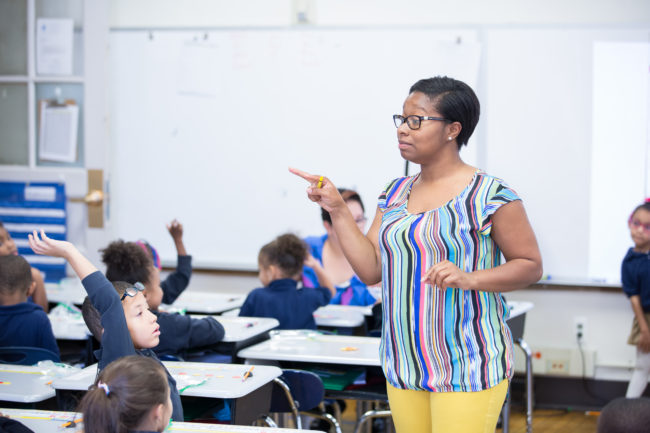02.07.18Tiny Things To Make You Successful: Brittany Rumph Models the Self-Interrupt (Video)

In TLAC 2.0 I tried to describe some of the tiny little things that top teachers do that create a ton of learning value in their classrooms.
One of them is the ‘self-interrupt‘… a tool for making sure you aren’t trying to talk over students when it matters, and for gently setting the expectation that you won’t compete for attention when there’s a direction or explanation everyone really needs to hear.
Here’s how I described it in the book:
In some cases, you may need to stop in order to start—that is, start a sentence and break it off to show that you will not go on until you have full attention. Using this method, the self-interrupt, makes the fact that you are stopping obvious. A champion teacher would likely execute his self-interrupt in the middle of a word, as in “Sixth grade, I need y—” This makes the break more striking and calls more attention to it.
Adding some formal posture to your self-interrupt makes it stronger. Right after you break, move to a more formal posture and hold it, still, for a second or two. If you are in the middle of a movement, you also might consider freezing and holding your pose for a second. To up the listening ante, another smart move is to drop your voice a little lower right after your self-interrupt.
I thought I’d share a perfect example of the self-interrupt from Brittany Rumph’s Kindergarten classroom at Rochester Prep West Campus ES:
BRumph.SelfInterrupt from TLAC Blog on Vimeo.
Some notes:
The Why: Brittany is giving a critical direction to the class about what they’re going to do next. If they don’t hear it, their time is wasted and students get lost. It’s a good time to make sure everyone is attentive.
There’s a student in the back with his hand up to ask about something unrelated. Not a mortal sin but it’s still important that he listen. Plus he’s starting to talk to his classmate. Now two scholars aren’t going to hear the directions, and Brittany risks sending the message that it’s ok to chatter away when she’s explaining what’s next.
The How: In mid-direction she notices the off-task scholar, breaking her phrase mid-word: “We’re gonna op-….” That’s the self-interrupt. It’s unexpected. Abrupt. It signals that she needs attention before she goes on in the quickest and least invasive way. Everyone becomes alert that something needs fixing. But now she’s got to be fast! And she’s got to not direct attention to the distraction– you can’t fix a distraction by creating a bigger or longer one.
So she adds some other tools to her self-interrupt–a little square up–i.e. faces the scholar in question. A little formal posture. A non-verbal to remind him to be in learner’s position listening carefully and then to put his hand down. Older students might get the break in her directions and understand right away to fix it. Little ones need a little more. But the whole time she’s warm, smiling. There’s a little nod of affirmation. And then as soon as it’s fixed she’s back to teaching in her bright clear teaching voice. All is well.
That’s how it works–a tiny little thing that self-interrupt but in the hands of a teacher like Brittany it can be a sure tool for keeping everyone attentive.
